Why 500 Yards Plots in DHA Karachi Phase 6? DHA Karachi Phase 6’s 500-square-yard residential plots are the goldilocks of luxury urban living – big enough for an estate-style 5–6 bedroom bungalow, yet manageable enough to stay liquid in resaleapnadha.com. This plot size unlocks expansive design potential (think home theaters, gardens, and double kitchens) without the long sale cycles of 1000-yard estatesapnadha.com. Phase 6 itself is a coveted locale, known for its modern infrastructure, top schools, parks, and lively commercial avenues. The phase’s map location sits at Karachi’s sweet spot – adjacent to Clifton and easily accessible from main city arteries – giving residents both elite neighborhood vibes and practical commute routes. Importantly, liquidity is a hallmark here: 500-yard plots in Phase 6 enjoy consistent demand and are considered a “benchmark” asset that holds value even as markets ebb and flowapnadha.com. In short, if you seek a blend of design freedom, lifestyle amenities, and resale safety, Phase 6’s 500-yard offerings hit the mark.
Estate Layout & Flexibility on 500 Yards
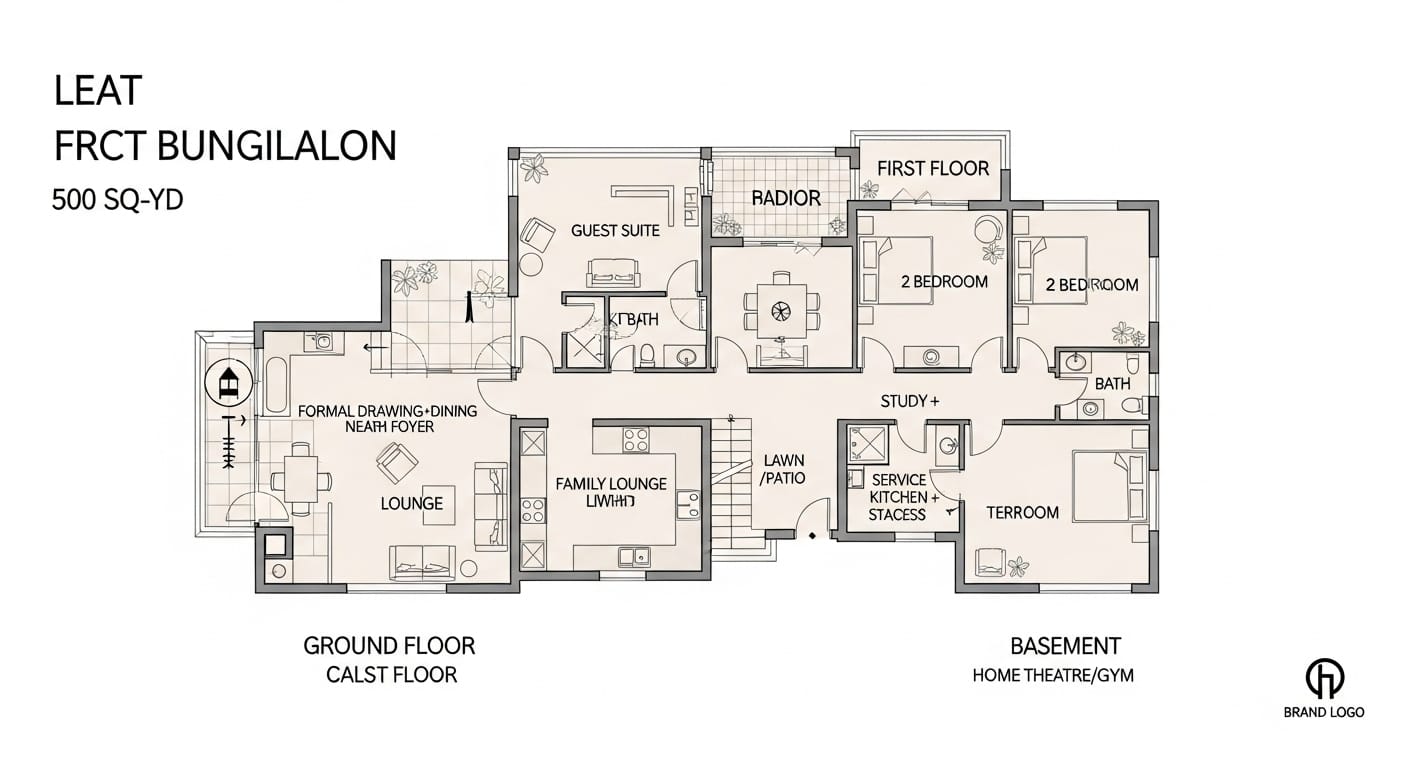
A 500-yard plot (roughly 4500 sq. ft., often ~45 x 100 ft dimensions) gives you serious architectural elbow room. You can comfortably plan a 5–6 bedroom luxury home with separate formal and family zones apnadha.com. Typically, the ground floor can host grand formal spaces – a drawing room and dining hall for guests – along with a guest suite and powder room for elderly family or visitors. The family lounge and main kitchen often sit towards the rear for privacy. Upstairs, you’ll have spacious bedrooms (each with attached baths), and perhaps a pajama lounge or home office. Many owners include a guest suite on the ground floor and family bedrooms on the first, creating a natural separation between entertainment areas and private livingapnadha.com.
Want extras? A 500-yard plot can accommodate them. Basement construction is feasible (soil conditions permitting) – popular uses include a home theatre, gym, or secondary living space apnadha.com. Planning a swimming pool or large lawn is also on the table, especially if you forgo a basement and utilize the backyard. You’ll typically get a frontage wide enough for a 2-3 car covered garage/porch. Also, don’t forget the support areas: Phase 6 buyers usually plan for a staff quarter (often on the roof or in the rear, with a separate entry) to ensure household help can reside and circulate without disturbing the main homeapnadha.com. In essence, 500 yards grants the flexibility for a single-unit palatial home or even a two-unit villa (ground and upper portions split for extended family or rental income) – all while staying within manageable scale for maintenance and future sale.
(Image suggestion: A sample 500-yard house floor plan or layout diagram, illustrating separate formal lounges, a family living area, and optional basement/pool.)
Location Cues: Prime Streets vs. Pitfalls in Phase 6
Not all plots in Phase 6 are created equal – street placement is key to long-term value. Here’s what to consider:
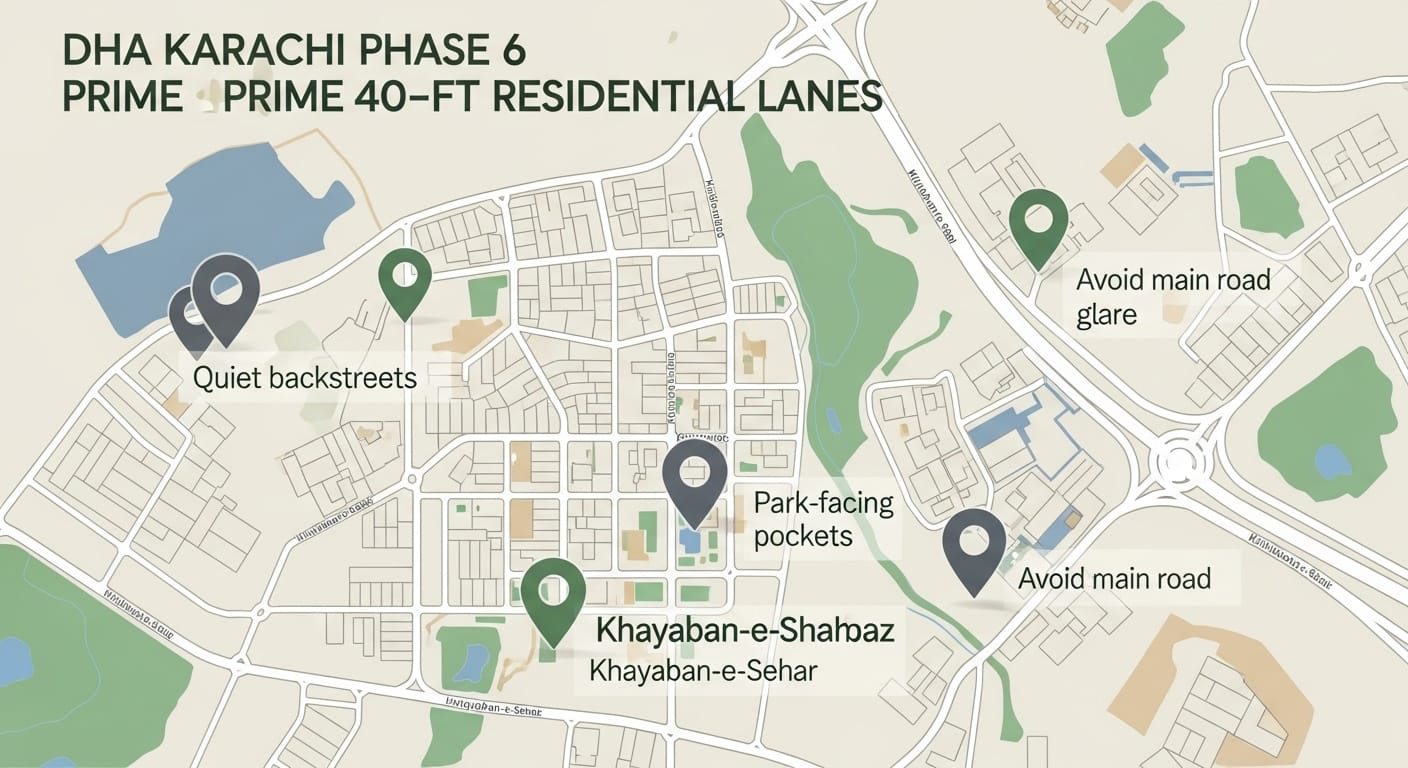
- Prime Street Pockets: Seek plots located a couple of turns off main boulevards like Khayaban-e-Shahbaz or Khayaban-e-Seharapnadha.com. The Shahbaz and Sehar pockets in particular are renowned – they offer quick access to vibrant commercial strips and eateries, yet the 40-ft wide residential streets are far enough to remain peacefulapnadha.com. A 40′ right-of-way (ROW) street is ideal: wide enough for easy parking and two-way traffic (your SUV can do a smooth turning test), but not so wide that it becomes a busy thoroughfareapnadha.com. These mid-width streets in Phase 6 tend to have easy resale because they balance accessibility with tranquility.
- Streets to Avoid: Think twice about plots directly on Khayaban-e-Ittehad or other primary arteries. While main-road frontage might sound prestigious, it often means heavy traffic noise and even headlight glare into your windows at night (a common regret of those who bought “avenue-front for prestige”)apnadha.com. Also, corner plots on a fast, cut-through road are less desirable than corners on quiet cul-de-sacs – not all corners are equalapnadha.com. In Phase 6, a corner on a calm lane can fetch a premium, but one on a busy intersection might struggle with privacy and noise.
- Orientation & Exposure: West-open plots (facing west) are popular in Karachi for a reason – they catch the cool evening sea breeze, a natural air conditioner in the sweltering monthsapnadha.com. Buyers often pay a bit more for west-open orientation. However, west-facing homes do get intense late-afternoon sun, so savvy builders add shading elements or greenery to mitigate heatapnadha.com. Park-facing plots also command ~10–15% higher prices in Phase 6, thanks to open views and recreation at your doorstepapnadha.comapnadha.com. Just verify the park’s usage: a serene green space is a plus, but if it doubles as a weekend sports ground with crowds and parking chaos, you might reconsider or ensure your boundary walls and gates offer privacyapnadha.com.
- Adjacencies Matter: Examine what’s next door. A plot abutting a commercial area could mean convenience (shops in walking distance) but also potential late-night noise or parking overflow. Plots near mosques are valued by many (easy access for prayers), but be mindful of loudspeaker sound at dawn – it’s personal preference. Avoid plots backing onto a boundary or drainage (nala) at the phase’s edgeapnadha.com. These edge conditions can bring security concerns or risk of water seepage unless properly engineered. Similarly, low-lying plots where rainwater visibly accumulates need scrutiny – check topography and whether the street has proper storm drainsapnadha.com. It’s wise to visit a prospective plot after heavy rain to see water runoff patterns.
- Construction Clusters: Phase 6 is largely built-up, but if you identify a pocket with multiple ongoing constructions (say 3–4 empty plots in a row under development), prepare for short-term inconvenience. New construction means 1–2 years of dust, noise, and heavy equipment on that streetapnadha.com. If you’re planning to build immediately, you might tolerate it; if you intend to live there soon in an existing home, you may prefer a street that’s mostly completed. A pro tip from local experts is to visit again at sunsetapnadha.com – you’ll notice neighborhood activity, traffic levels, and any nuisance (like a rowdy tea café or a lack of streetlights) that isn’t obvious at midday.
(Image suggestion: An annotated map of Phase 6 highlighting prime residential streets (e.g. around Kh-e-Shahbaz/Sehar) and marking areas to be cautious about like main road frontages or near drains.)
Start with Official DHA Docs & Verification
Before you even think of token money or signing papers, do your homework with DHA’s official tools:
- Phase Maps: Download the latest DHA Karachi Phase 6 map from the official DHA websiteapnadha.com. It’s non-negotiable – having the sector map helps you verify plot location, surrounding plot numbers, parks, and street widths. Phase 6 has many similarly named streets (multiple “26th Streets” etc.), so mark the exact lane on a printed map to avoid confusion during site visits.
- Plot Verification Portal: DHA Karachi provides an online Plot Verification serviceapnadha.com. Enter the plot’s details (allotment or transfer number) to confirm the seller is the legitimate owner and see the transfer history. This step can uncover if a plot is still allotted to a military officer (initial allottee) or has been transferred multiple times (which isn’t bad per se, but you’ll want the entire chain of documents).
- Payment Dues Check: Equally important is the Payment Verification portalapnadha.com. This lets you verify if all development charges or dues are paid up for the plot. In Phase 6 (being fully developed), there shouldn’t be outstanding development charges, but it could flag any unpaid transfer fee or taxes tied to the plot’s file number and the owner’s CNIC. A clean payment record means you won’t inherit someone else’s arrears.
- Transfer Procedure – Urgent vs. Routine: DHA’s transfer process in 2025 offers two speeds. An Urgent Transfer can be done same-day by paying an extra fee to DHAapnadha.com. Both buyer and seller appear for a “sign-before” appointment, biometrics are done on the spot, and the transfer letter is issued almost immediately. This is great if you need quick possession or are finalizing near a month-end (avoiding price changes). The standard Routine Transfer takes about 1–2 weeksapnadha.com. It involves document scrutiny (DHA checks the file), then scheduling both parties for biometric verification and signing, after which transfer fees and taxes are paid, NOC is issued, and finally the transfer letter is collected. Plan your payment schedule around these timelines – for instance, many deals specify full payment to seller on transfer day, not before.
- Safe Payment Practices: Keep all money flow on official rails. DHA Karachi now has online payment systems for its fees – use them and obtain official receiptsapnadha.com. When giving token money (initial deposit) to the seller, insist on a written agreement/receipt that mentions the token amount, the agreed total price, and refund conditions (e.g. if either party backs out or if verification fails). Never rely on just WhatsApp or verbal assurances for payments – “screenshots aren’t protection”apnadha.com. Also, avoid cash deals; use pay orders or bank transfers for traceability. Phase 6 is a prime market, so professional sellers will understand the need for transparent transactions via documented channels.
Price & Liquidity Discipline (2025 Market)
Phase 6’s 500-yard plot prices in 2025 sit in a upper-middle tier of DHA Karachi’s property spectrum. Generally, expect asking prices from around PKR 7 Crore up to 12+ Crore for standard plots, with most good options clustering in the 8–10 Cr rangeapnadha.com. Truly exceptional plots (e.g. a big park-facing corner on a top street) can push higher – some deals have been noted in the PKR 13–15 Crore bracket for trophy locationsapnadha.com. Price variation comes down to the factors we discussed: street tier, orientation, and immediate surroundings.
Premium Attributes: Within Phase 6, features like west-open or park-facing usually fetch a 10–15% premium over similar plots on the same streetapnadha.comapnadha.com. A west-open plot that might be 8.5 Cr if east-facing could list for ~9.5 Cr due to the breeze/ventilation appeal. Park-facing plots see a bump for the view and openness, but remember to gauge if the premium is warranted by the actual park quality (a small playground vs a large park). Corner plots add design flexibility (two-side open, better elevation design) and extra parking space; they also command higher prices if the location is otherwise sound (corner on a quiet street = good, corner on a busy junction = not so much)apnadha.com. One more micro-factor: verified utility connections. In older phases like 6, all plots have utility access, but a plot that already has, say, an active water/gas connection (perhaps from an old house that was demolished) might save a new builder time and add a small premium.
Resale Demand & Liquidity: 500-yard plots are the most liquid segment of Phase 6’s marketapnadha.com. The buyer pool is broad – from upgraders who sold a 300-yard house, to investors, to builders looking to construct and sell a bungalow. This means if you buy at a fair market price, you can generally resell without much drama, provided the market isn’t in a serious downturn. Even in softer market cycles, Phase 6 500-yard plots tend to move because end-users are always shopping this category (it’s the quintessential family plot size). That said, liquidity is not a license to overpay. Smart buyers follow “same-corridor comps” – i.e. recent sale prices of plots on the same or very nearby streets in the last 2–3 monthsapnadha.com. Use those as your benchmark, not hearsay from other phases or outdated price tables. Phase 6 has pockets of varying value; a 9 Cr deal on one lane doesn’t justify a 9 Cr ask on a less desirable lane. Staying disciplined to evidence will ensure you buy at a price where you can exit readily if needed.
Buyer Segments: It helps to know who your potential resale buyers could be. In Phase 6, end-user families dominate – often professionals or overseas Pakistanis wanting a Karachi base in a secure, upscale area. These buyers prioritize location and plot orientation (they’ll pay for west-open or park-facing if it checks their boxes). Builders/Developers are another segment; they constantly seek 500-yard plots in Phase 6 to build ultra-modern homes for sale, since demand for finished houses here is high. If you’re buying a plot and not building immediately, a builder might be your future buyer – they are very street-price sensitive, so again, purchasing at the right price matters. Finally, long-term investors also park money in Phase 6 land due to its stability – while they might prefer larger plots in Phase 5 or view Phase 8 for speculative gains, Phase 6’s steady appreciation and rental yields on constructed houses make it a safe betapnadha.com. Overall, this diverse demand (end-users and investors alike) keeps the 500-yard segment buoyant.
Phase 6 vs. Phase 5 vs. Phase 8 – 500 Yards Compared
To put Phase 6’s landscape in perspective, let’s compare it with its notable neighbors, Phase 5 and Phase 8, for 500-yard plots:
| Attribute | Phase 5 – Prestige | Phase 6 – Vibrant | Phase 8 – Future |
|---|---|---|---|
| Typical 2025 Price | ~PKR 7.5–10 Croreapnadha.com (highest baseline) | ~PKR 6.5–10+ Croreapnadha.com | ~PKR 5.5–11 Croreapnadha.com (wider range) |
| Liquidity | Steady demand; 500 yd moves fast but inventory is limitedapnadha.com. | Highest liquidity – Phase 6 plots trade the fastest in DHAapnadha.comapnadha.com. | Moderate; slower turnover – buyers often take a long-term viewapnadha.com. |
| Neighborhood Profile | Established heart of DHA; elite old-money vibe, adjacent to Clifton. | Modern and fully developed; mix of upscale residential and bustling commercial spots. | Premium coastal belt; many new developments and ongoing infrastructure (marinas, high-rises in view). |
| Buyer Appeal | Favored by traditional affluent families; prestige and proximity to city center. | Broad appeal – families, builders, and investors all active due to Phase 6’s convenience and safetyapnadha.com. | Attracts future-focused buyers and luxury seekers eyeing scenic views; some speculative investors. |
| Notable Premiums | Quiet backstreets off Kh-e-Bukhari & Sehar are top picksapnadha.com; very few 500-yd options, so high competition. | Shahbaz/Sehar sector plots with 40′ streets are hotapnadha.com; west-open & park-facing add value, as in Phase 5. | Sea-facing plots command highest prices, but come with long hold periodsapnadha.com (fewer immediate buyers for the premium). |
Interpretation: Phase 5 gives you pedigree and centrality, at a price; Phase 6 offers the best balance of liquidity and lifestyle (it’s effectively the “market favorite” in 2025apnadha.com); Phase 8 is about future gains and a luxury coastal lifestyle, but you may wait longer to realize full value. Depending on whether your priority is prestige, resale agility, or long-term upside, you can choose accordingly. Many savvy investors actually diversify across these – e.g. living in Phase 6 for now, holding a Phase 8 plot for the future.
Installments vs. Cash Deals in 2025
In Phase 6’s context, plots are all fully developed and possessory, meaning you’ll typically be doing a straightforward cash purchase (full payment) to buy from a private seller. DHA is not offering any installment plans in Phase 6 (those are usually for new schemes like DHA City or upcoming phases). However, you might encounter scenarios like a seller asking you to take over an installment schedule (if they bought a plot through some financing or pending payments), or a builder offering a payment plan on a constructed house. Approach such deals with extreme caution.
Cash is King: If you have the financing ready, a cash deal is cleaner and gives you negotiation powerapnadha.com. Sellers prefer a lump sum payout; you can often secure a slightly better price per yard when paying all upfront. Also, if you plan to start construction soon, paying in full and obtaining immediate possession/transfer is crucial – it’s the only way to get DHA’s approval to build.
Installment Situations: Only consider an installment structure if it’s DHA-sanctioned and transparentapnadha.com. For example, if someone is selling a file in DHA under an official payment plan, verify that plan on DHA’s portal (like the Indus Vista or any announced project)apnadha.com. In Phase 6’s resale market, this is rare – practically all sales are resale plots requiring full payment. If a private seller proposes that you pay, say, 50% now and 50% after a year (an unofficial installment), recognize the risk: until full payment, you likely won’t get the plot transferred to your name, leaving you exposed. Golden rule: keep every rupee on DHA’s official radarapnadha.com. If it’s not an officially recognized payment plan, insist on a proper legal agreement and consider escrow services. Many seasoned agents will tell you bluntly that in DHA Phase 6, installments aren’t really “a thing” – it’s predominantly a cash market in 2025.
Risk Triggers to Watch: Be wary of any deal where the seller’s documents aren’t complete (“allocation in process” or “intimation letter only”) – Phase 6 plots should have an Allotment or Transfer Letter in hand. If someone claims a “file” for Phase 6 on installments, that’s likely misinformation. Also, never pay without a proper NOC and transfer mechanism. If you’re mortgaging (taking a bank loan), DHA allows it but follow their procedure (bank pays the seller directly on your behalf and keeps plot lien until you repay). Unofficial credit arrangements can lead to litigation. In summary, if you can’t afford Phase 6 on cash, consider a smaller plot or a different phase rather than a risky installment workaround. The peace of mind is worth it.
Estate Design Best Practices
Building on a 500-yard plot in Phase 6? You’re aiming for a luxury home, and thoughtful design will amplify both your living experience and the property’s value. Some estate layout guidance to consider:
- Formal vs Family Zones: Culturally, we often maintain a distinction between the guest-facing areas and private family areas. Leverage the plot size to create this separation. Typically, a foyer leads to the formal drawing and dining rooms at the front – these can feature high ceilings or even double-height space for grandeur. The family lounge, breakfast area, and everyday kitchen are positioned towards the back, often opening into a patio or lawn for a private indoor-outdoor feel. By zoning this way, you ensure that when guests are over, the family can still relax in their part of the house undisturbed.
- Vertical Split (Portions): A 500-yard house can be either a single unit or divided into two portions (ground and first floor separate) with independent entrances. If you might rent out one portion or have multi-generational family living, plan the staircase and entry accordingly from the start. DHA building bye-laws allow separate units on this size, but ensure you have separate utility meters and proper sound insulation between floors. Even if you intend a single-family use now, an adaptable design (with a provision to partition later) can be a value-add for resale.
- Servant Quarters & Services: Accommodating domestic staff is a norm in high-end Karachi homes. Common practice in Phase 6 is to include a servant quarter (room with bathroom) on the rooftop or in the backyard with a discreet separate entry. Plan the service circulation – e.g., a side passage from the kitchen to the outside – so groceries, maintenance, etc., can go in and out without traversing formal living areasapnadha.com. Also consider a small pantry or kitchenette on the first floor (or at least plumbing provisions) for convenience, especially if it might be used as a separate unit.
- Optional Luxuries (Pool, Basement): Both basements and swimming pools are viable on 500 yards, but do your homework first. Conduct a soil test and water table analysis before you finalize these featuresapnadha.com. Some parts of Phase 6 have a higher water table (being near the sea), which could make a basement costly (waterproofing, dewatering during construction) or a pool prone to ground water pressure – not deal-breakers, but important for budget and engineering. If you go for a basement, think about natural light (maybe a small sunken courtyard) and ensure you have a sump pump system for any rain/flood water. If you’re adding a pool, plan for maintenance: filtration plant location, drainage, and safety (secured with a fence if kids around). Both amenities impress buyers but only if done properly – a leaky basement or a poorly finished pool can become liabilities.
- Future-Proofing: Build with an eye on the future. Incorporate conduit for solar panels and extra electrical load capacity for a solar inverter system – many Phase 6 homes are installing 15–20 kW solar setups to combat energy costs and outages. Plan space for batteries or a generator. It’s easier to lay these provisions during construction than retrofitting later. Similarly, consider a greywater plumbing line (to reuse sink/shower water for garden irrigation) as water scarcity is a growing issue – DHA even supplies non-potable grey water for lawns in some phasesdhakarachi.org. High-efficiency fixtures, double-glazed windows, and cool roof treatments (heat-reflective paint or tiles) might add to upfront cost but pay off in comfort and bills.
Climate & Sustainability Planning
Karachi’s coastal climate should heavily influence your build strategy on a 500-yard plot. Phase 6 homes can be large, so make them sustainable and comfortable:
- Orientation & Sunlight: The sun in Karachi is punishing in late afternoon, especially on west and south exposures. If your plot is west-open, plan the façade smartly – use deep porches, verandas, or vertical louvers to shade west-facing windows. Plant fast-growing trees or tall hedges on that side for natural shade. East-facing houses get morning sun (kinder, but heating up by noon). Utilize roof overhangs on south and west walls to cut direct sun – architectural shading devices can lower inside temps significantlygharplans.pk. Also, capitalize on the north side for large windows – north light is diffuse and not hot, great for daylighting without heat.
- Natural Ventilation: Design the house for cross-breeze. Karachi benefits from sea breezes that usually blow from the south/southwest in the evening. Align your floor plan so that windows on opposite sides (e.g. north-south or east-west depending on orientation) can be opened to allow air flow through the housegharplans.pk. Ventilation shafts or courtyards can bring light and air into the center of the building – a common feature now in high-end homes is a small indoor courtyard or double-height space with clerestory windows that release hot air upwards. High ceilings (12+ feet) also help keep rooms cooler by allowing hot air to rise. Proper ventilation design means you’ll rely a bit less on AC, and the home stays fresh even in power outages.
- Solar & Energy: Plan for solar panel installation on your rooftop. Phase 6’s low-rise skyline and ample sun (over 250 sunny days a year) mean you can generate a lot of power. Allocate a shadow-free zone on the roof for panels – roughly 300–400 sq. ft. can fit a ~10 kW system which massively cuts grid usage. Ensure your electrical system is set up with a changeover switch and space for inverters/batteries. Many residents are moving to hybrid systems (solar + grid + battery) for energy independence. Even if you don’t install immediately, leaving conduits and roof structure (like a pergola or mounts) ready is wise. On the energy use side, invest in inverter AC units, LED lighting, and smart home systems to optimize consumption.
- Water Management: With water supply often under strain, consider both harvesting and recycling. A 500-yard roof can collect thousands of gallons of rainwater in monsoon – set up a simple gutter and tank system to store rainwater (even if for gardening use). Install a greywater recycling unit or at least separate plumbing lines: water from showers, sinks, laundry (excluding toilets) can be filtered and reused for lawn irrigation or cleaning outdoors pahp.gop.pk. DHA Karachi is already encouraging this by providing non-potable water tankers for horticulturedhakarachi.org. Additionally, ensure the lawn is slightly sunken or has a slope to retain rain runoff – integrated landscaping can act as a sponge, reducing load on drainage systems. For sewage, verify your house plans adhere to CBC (Cantonment Board) guidelines – they often require inspection chambers and specific gradients to connect to the municipal sewer.
- Materials & Insulation: Don’t skimp on the “invisible” sustainability elements. Use insulated roof panels or apply polyurethane foam insulation under the roof slab to reduce heat transfer. Cavity walls or insulated blocks on the external walls can keep the indoors far cooler (reducing AC needs)gharplans.pk. Opt for low-E double-glazed windows; they cut heat and also dampen noise (great if you’re near a busy road). These features might not be flashy like a fancy kitchen, but educated buyers in 2025 value homes that are efficient and future-proof. They’ll feel the difference in Karachi’s hot climate, and it can be a selling point that your house is “climate-resilient” and cheaper to run.
Field-Tested 14-Point Due-Diligence Checklist
Buying a 500-yard plot in Phase 6 is a multi-crore decision – you want to get it right. Here’s a 14-point checklist distilled from seasoned investors’ playbooksapnadha.comapnadha.com:

- Street hierarchy: Confirm the plot is only 1–2 turns off a main boulevard (not too deep inside, not directly on it). This balance ensures future buyers find it attractive and accessible.
- Road width & geometry: Visit with an SUV or large car – can it turn easily into the street and driveway? A 30′ street on a tight corner might be a pain for big vehicles. Aim for at least 40′ ROW for comfortable accessapnadha.com.
- Frontage & setbacks: Check the plot’s frontage (width on the street) and DHA setback rules. A wider front (e.g. 50′ vs 40′) is better for design. Ensure no odd shape that reduces usable width.
- Orientation value: Note if it’s west-open, park-facing, or a corner – and price those within that street’s context. A west-open on a given lane might be worth extra, but compare with recent sales on east-open on same laneapnadha.com.
- Topography: Is the plot level, sloping, or low-lying? See if there’s a rainwater slope – low plots often need filling (added cost)apnadha.com. Steer clear of plots at the end of sloping streets where water collects.
- Soil and water table: Especially if you plan a basement, get a soil test. Knowing soil type (clay, sand) and water table depth will inform construction feasibilityapnadha.com.
- Surroundings & upkeep: Take a walk around – are there proper sidewalks, street lights, and drainage? A well-maintained street (neat curbs, green belts) indicates active CBC (Cantonment) maintenance and responsible neighborsapnadha.com.
- Edge risks: If the plot is near a nullah (storm drain) or at phase boundary, inspect the mitigation – is it lined and fenced? Edge plots might have more mosquitos or security patrol needsapnadha.com.
- Paper trail: Verify the complete chain of ownership documents – from the allotment letter to all subsequent transfer letters. Match owner’s CNIC name with the documentsapnadha.com. No missing links.
- Online verification: Use DHA’s online verification for plot and payment statusapnadha.com. A clear report from DHA’s system is a must before you commit token money.
- Utilities assurance: Ask for written confirmation of utilities status – is the plot’s area getting DHA water supply? (Phase 6 generally yes, but some pockets might have timing issues). Check if any connections like gas or electric meters already exist or any applications are in process.
- Comparable sales: Demand evidence of at least 3–5 comparable plot sales in Phase 6 within the last 60–90 daysapnadha.com. The agent should furnish this. It keeps everyone honest on the going rate.
- Token terms: When giving token, document the terms – how long until full payment (typically 15–30 days), what happens if either party backs out (token refund clause), and clarify who pays transfer fee, etc. This avoids disputes laterapnadha.com.
- Second visit (time it right): Visit the plot at a different time – ideally evening or night – before finalizingapnadha.com. Neighborhoods can feel different after dark: check street lighting, noise (perhaps a nearby café gets loud), and overall vibe.
Keep this checklist handy; it’s saved many buyers from regrets. If any point raises a red flag, pause and investigate further or negotiate a solution (like price reduction for a low plot needing fill, or seller to clear an outstanding bill, etc.).
Top 10 Buyer Mistakes When buy 500 Yards Plots in DHA Karachi Phase 6(and How to Avoid Them)
Even savvy buyers can slip up in the heat of a deal. Here are 10 common mistakes people make when buying DHA Karachi plots (Phase 6 included) – and how to avoid themapnadha.com:
- Basing price on cross-phase hearsay – Avoid by sticking to local evidence: Don’t assume Phase 6 should be X because Phase 5 or 7 had a deal at Y. Each phase (even each sector) has its own pricing. Use recent Phase 6 sales as your guide, not anecdotesapnadha.com.
- Chasing main-road prestige – Avoid by prioritizing livability: Buying on a big Khayaban might impress initially, but daily life could be noisy and unsafe for kids (and resale market is smaller). Often a plot one street behind the main road is far better – you get the accessibility minus the traffic glareapnadha.com.
- Assuming “park-facing = always best” – Avoid by checking the park reality: A park-facing plot is lovely, but if that park doubles as a cricket ground or public event space, expect crowds and noise. Always visit the park at different times or talk to locals. Sometimes a street-back from the park is more peacefulapnadha.com.
- Skipping soil test for basement plans – Avoid by investigating early: It’s a mistake to assume you can just dig and build. In Phase 6, soil can vary even within a few blocks. Spend the Rs 40–50k on a geotechnical report before finalizing your design (or your purchase, if a basement is a must for you)apnadha.com.
- Rushing the token on informal promises – Avoid by verifying via DHA: Some buyers drop token money after seeing a Whatsapp snapshot of an allotment or a verbal “ok” on ownership. Insist on DHA verification (online or in-person) first. Token should ideally be given in DHA office or with a proper receipt, not just on the flyapnadha.com.
- Overbuilding the facade, under-investing in infrastructure – Avoid by smart budgeting: It’s tempting to pour money into Italian tiles and fancy elevations. But if you skimp on the less-seen essentials (waterproofing, insulation, electrical quality, generator, security systems), the living experience suffers. Balance your budget: first make the house solid and comfortable, then see how much is left for cosmetic flourishesapnadha.com.
- Ignoring staff & service circulation – Avoid by designing for it: We mentioned this in layout – don’t treat staff areas as an afterthought. A poorly located servant quarter (e.g., opening into your main kitchen or lobby) can disrupt privacy. Always plan a separate route for groceries, trash disposal, and staff entry/exitapnadha.com. It keeps the household running smoothly.
- Forgetting neighbor construction impact – Avoid by timing your move: If you buy a plot with many empty neighbors and build immediately, know that once you’re done, others might start – meaning 2 years of drilling next door. Try to gauge if adjacent plots have any ongoing design approvals or sales; you might sequence your build or move-in after the major construction on the street is doneapnadha.com. Or at least budget for cleaning and repainting external areas post neighborhood construction.
- Mis-budgeting taxes & fees – Avoid by getting a cost sheet: Beyond the plot price, buying in DHA Phase 6 involves: DHA transfer fee (e.g. around PKR 200 per sq. yd for this phase), stamp duty/CVT (around 2-3% of DC value) and Advance Income Tax for the buyer (for filers ~2% of FBR value, higher for non-filers)manahilestate.com. Plus agent commission (often 1% each side) and perhaps misc. expenses (NOC, site survey). Don’t be caught off guard – have your agent provide a breakdown of all payable within the transfer week.
- Not measuring your gate and driveway – Avoid by verifying on site: This one’s quirky but real: after construction, some owners found their gate width or angle made it hard for big cars to enter! During design, ensure the gate placement and porch design allow an SUV to comfortably turn in from the streetapnadha.com. Phase 6 lanes are mostly straight, but if on a curve or cul-de-sac bulb, test it. Also, document any specific design approvals or deviations (like if you plan a sliding gate encroaching the footpath) to avoid issues with authorities or neighbors later.
Learn from these mistakes – each has been paid for by someone’s time, money, or sanity. By being proactive, you’ll ensure your buying process and build go as smoothly as possible.
Budget Sanity: Land, Build & Beyond
Let’s talk numbers and budgeting for a 500-yard project in Phase 6. It’s easy to get carried away, so maintain discipline by breaking it down:
- Land Cost: This will be your biggest chunk upfront. As discussed, 500-yard plots here hover around PKR 7–12 Crore in late 2025apnadha.com. Suppose you target a decent location for ~PKR 8.5 Crore – use that as a working example. (If you land a west-open park-facing gem, that might be 10–11 Cr; adjust accordingly.)
- Construction Cost (2025): Construction costs have escalated with inflation, material costs, and high-end finish demands. For a high-quality build in DHA, current rates range PKR 7,000–9,000 per sq. ft. for a 500-yard homeapnadha.com. A typical two-story plus basement 500-yard house might have ~7,500–8,500 sq. ft. of covered area (including terraces counted half, etc.). That means you’re looking at roughly PKR 5.5–7.5 Crore in construction expenses. Closer to 7,000/sqft if you’re modest with imported finishes; 9,000/sqft if you go premium (Italian flooring, smart home tech, fancy woodwork everywhere).
- Soft Costs: These are often overlooked. Design and approvals – hiring a reputable architect (fees ~4–6% of construction cost), structural engineer vetting, DHA map submission fee, utility connection fees (electric, gas connection charges), soil testing (~PKR 50k), and project management if you use one. Additionally, think about temporary arrangements: renting a place if you intend to move only after construction, or securing storage for materials. Soft costs can easily be 5–10% of your construction budget. For our example, that could be ~PKR 0.4–0.7 Crore extra.
- Contingency: No project is free of surprises – material price hikes, design changes, or the infamous “yaar ab is mein pool bana hi lete hain” impulse halfway. Set aside 10–12% of the construction cost as contingency bufferapnadha.com. On a PKR 6 Crore build, that’s ~PKR 0.6–0.7 Crore reserved. If you’re lucky and disciplined, you won’t use all of it, but it must be there. It also covers any delays (interest costs if you’ve taken a loan, extended contractor times, etc.).
- Total & Reality Check: Add it up: Land (~8.5 Cr) + Build (~6.5 Cr average) + Soft (~0.5 Cr) + Contingency (~0.7 Cr) = ~16.2 Crore all-in for a brand new Phase 6 500-yard home in 2025. It can be done for less (choose a cheaper plot, or build mid-tier finishing to cut maybe 1–1.5 Cr). It can also easily go more if you pick an ultra prime plot and lavish construction (some 500-yard homes end up costing 20+ Cr in total because of expensive plot and ultra-lux spec). The key is to align your budget with your exit strategy. If this is your forever home, spend where it makes you happy (within your means). If it’s an investment flip, be mindful of ceiling prices – e.g. a 500-yard house in Phase 6, no matter how luxurious, might cap out at a certain sale price ceiling, so overcapitalizing beyond that is risky.
Lastly, factor time into budget. A quality 500-yard bungalow takes 14–18 months to build in Phase 6apnadha.com from ground breaking to finish, assuming steady work. Carrying costs (if financed) or opportunity costs (capital tied up) for that period should be acknowledged. Don’t forget the furnishing and moving costs at the end – even things like appliances, window blinds, landscaping can add a few million more. Budgeting isn’t as exciting as picking out floor tiles, but it ensures you don’t hit a cash crunch when it’s time to install the lift or pool heater you always wanted.
– Explore More
- By Phase: DHA Karachi Plots for Sale ,
- By Size: 200 Yards in DHA Karachi, 300 Yards in DHA Karachi, 500 Yards (you’re reading it), 666 Yards in DHA Karachi, 1000 Yards in DHA Karachi
- Market & Process Guides: DHA Karachi Complete Buyer’s Guide 2025, DHA Transfer & Fees Process, Property Payment Plans & Loans 2025
FAQs (Phase 6 500 Yards)
Q1. Is a 500-yard plot in DHA Phase 6 a good investment?
Absolutely, Phase 6’s 500-yard plots are among the safest and most profitable real estate bets in Karachiapnadha.com. The locality’s high demand and DHA’s credibility mean prices have shown steady appreciation. Plus, you have flexibility – build a home for rental yield or hold the plot for capital gain. It’s a prime, developed area, so your investment starts working for you immediately (either in rental form or value uptick).
Q2. What is the price range for 500 sq. yd. plots in Phase 6 (2025)?
Prices vary with location and features, but generally range from PKR 10 Crore to 15 Crore as of 2025apnadha.com. Standard internal location plots might be on the lower end (~Rs 8–10 Cr), whereas west-open, park-facing, or corner plots on prime streets hit the higher end (Rs 12–15 Cr). Always check the latest market comps, as short-term market swings can tweak these ranges.
Q3. Can I start construction immediately after buying in Phase 6?
Yes – Phase 6 is fully developed and possession is given at transfer. Once you have the plot transferred to your name and obtain DHA’s building plan approval, you can start construction right awayapnadha.com. There’s no waiting period. Just ensure you follow DHA and CBC (Clifton Cantonment) building bylaws in your plans, and you’re good to go.
Q4. How long does the DHA plot transfer process take in Phase 6?
If you opt for an urgent transfer, it can be completed in a single day (you’ll pay an extra fee for this expedited process). A regular transfer typically takes about 1 to 2 weeksapnadha.com. This includes getting a no-demand certificate (NDC), document verification, scheduling the sign-before meeting for buyer and seller, and issuance of the transfer letter. Plan your payments accordingly – usually full payment is made at the time of transfer.
Q5. Do west-open or park-facing plots really have an advantage?
They do carry some advantages. West-open plots face west, meaning you get cooler evening breezes – a big plus in Karachi’s climate – and many buyers subjectively prefer the orientationapnadha.com. Park-facing plots offer open views and immediate access to green space, enhancing lifestyle. Both these features often command a premium (buyers may pay ~10% more)apnadha.com. However, consider the specifics: a park-facing that’s across a busy park (noise, visitors) might not be as peaceful, and a west-open house needs architectural tweaks to handle the harsh sun. But generally, yes – they’re sought after attributes in Phase 6.
Q6. Are 500-yard plots in Phase 6 available on installment?
No, not from DHA itself. Phase 6 plots were allotted and sold out long ago, so any purchase now is a resale requiring full payment to the seller. DHA Karachi’s installment plans are usually for new projects (e.g., DHA City or upcoming phases). If you come across an “installment deal” in Phase 6, it’s likely an owner financing arrangement – be very cautious and ensure everything is legally documented. It’s more common to secure financing through a bank (a home loan) than via an installment plan with the owner in this phase.
Q7. Phase 6 vs Phase 8: which is better for 500-yard investment?
They serve different goals. Phase 6 offers immediate gratification – it’s fully developed, so you can build or resell quickly, and it has the highest liquidity (plots resell faster)apnadha.com. It’s great for a family home you want to start using in the near term. Phase 8 is more about the long game – being near the sea, it has some ultra-premium pockets and long-term projects (like waterfront developments), so prices could appreciate significantly, but currently its market is a bit slowerapnadha.com. If you want a home in a buzzing community now, go for Phase 6. If you can hold for several years and fancy a more scenic locale (and possibly higher future upside), Phase 8 is enticing. Some investors do a bit of both: e.g., live in Phase 6 for convenience, invest in Phase 8 for the future.
Q8. What extra costs should I budget for when buying a plot (taxes, fees)?
When buying in DHA Phase 6, account for: DHA Transfer Fee (calculated per sq. yd., roughly PKR 200/ sq. yd for Phase 6 – so about Rs 10 lakh for 500 yd, but confirm current ratezameen.com), Stamp Duty and CVT (provincial taxes around 2-3% of the plot’s DC value – the government-assessed value, not market valuemanahilestate.com), Advance Income Tax (withholding tax for the buyer, if you’re a filer it’s around 2% of FBR value; higher for non-filers), and a DHA Membership fee (one-time, e.g., Rs 75k). Additionally, you’ll pay your real estate agent (typically 1% of sale price) and miscellaneous admin costs (like affidavit fees or NDC fee). In total, these extras usually amount to roughly 4–5% of the purchase price in transaction costs. It’s wise to get a breakdown from your agent or DHA office so you know the figure before you commit.
Conclusion
500-yard plots in DHA Karachi Phase 6 combine the best of location, lifestyle, and investment resilience. By following the guidance in this buyer’s guide – from choosing the right street and doing due diligence, to planning a sustainable build – you can unlock tremendous long-term value and a home tailor-made to your needs. Remember, smart buying is evidence-based: stick to real data on prices, use DHA’s verification tools, and be thorough with paperwork and planning. Phase 6 offers an unparalleled mix of modern living and liquidity; it’s why it remains the top choice for many DHA enthusiasts in 2025.
Ready to take the next step? For the best verified 500-yard listings in Phase 6, WhatsApp us at 0300-8277717 – our DHA experts will help you secure the ideal plot and navigate the process with confidence. Your dream home in Phase 6 awaits!

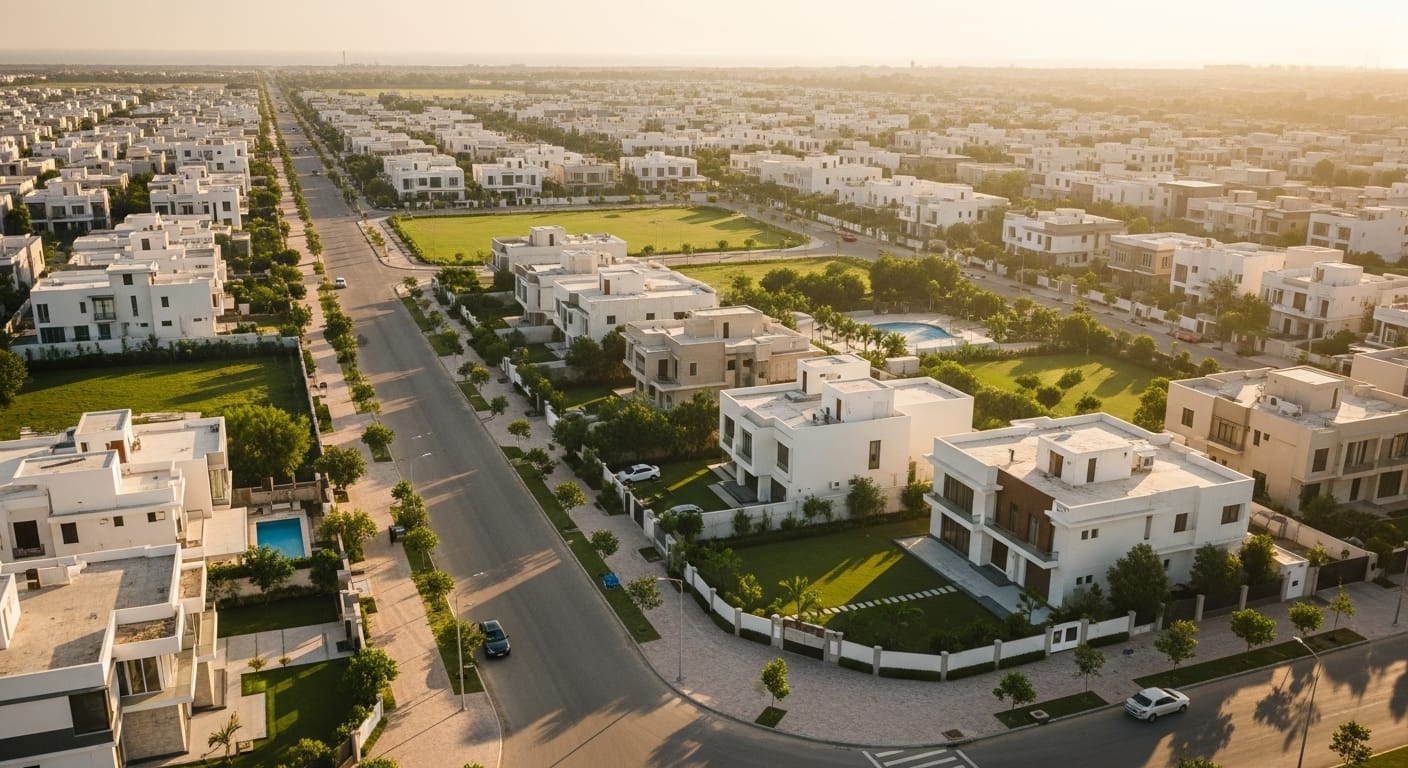
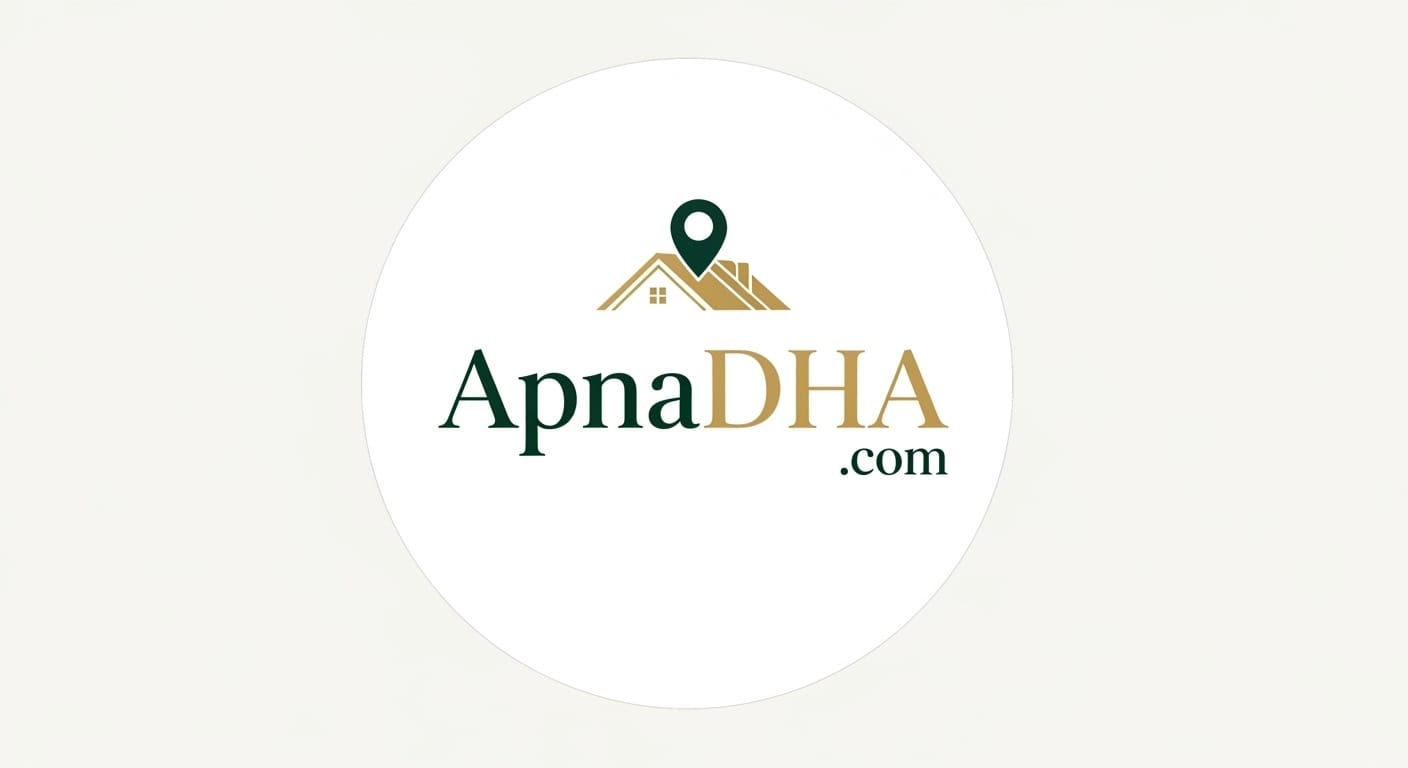

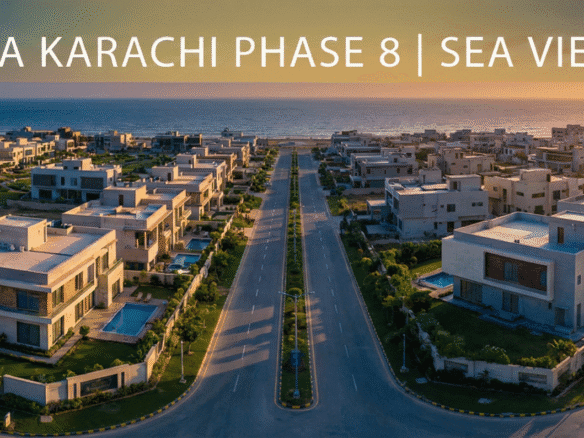
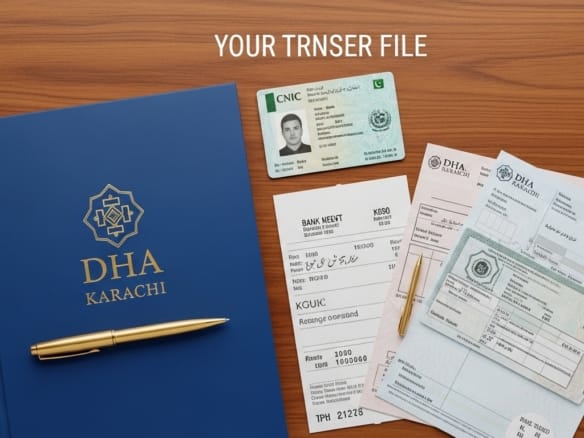
Join The Discussion